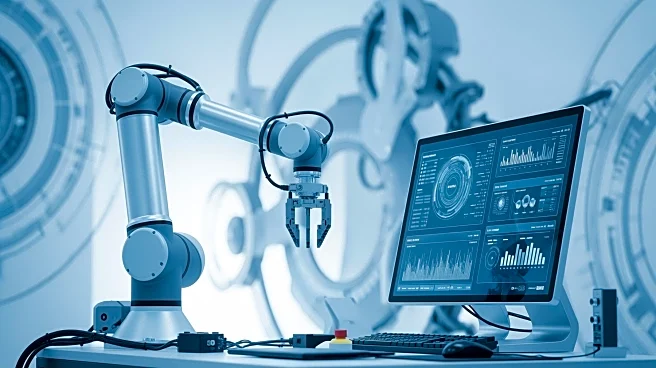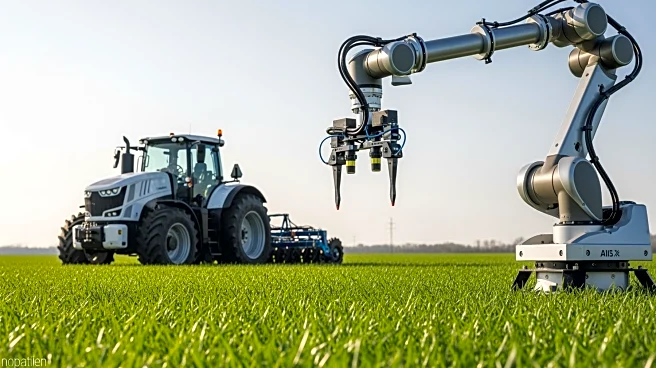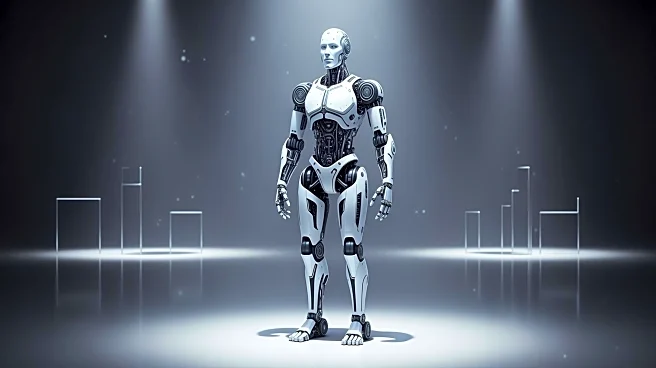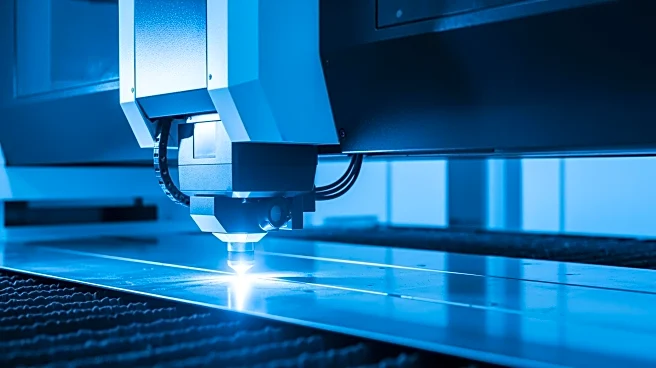What's Happening?
A recent study published in Nature examines the development of a humanoid finger with a rigid-flexible-soft structure (HFRFSS), designed to improve gripping capabilities. The study details the experimental
evaluation of the finger's mechanical properties, including its fingertip output force, stability against external impacts, and resistance to unnatural deformation. The HFRFSS is compared to other common gripper designs, such as pure soft fingers (PSF), pure rigid fingers (PRF), and wire-driven system fingers (WSF). The results indicate that the HFRFSS offers superior performance in terms of embracing force, stability, and manipulation reliability, making it suitable for handling both ultra-thin and heavy objects. The study highlights the potential of HFRFSS to adjust cavity pressure and bending angles to grasp objects of varying sizes and weights effectively.
Why It's Important?
The development of the HFRFSS represents a significant advancement in robotic gripping technology, with potential applications across various industries. Its ability to handle delicate and heavy objects with precision could benefit sectors such as manufacturing, healthcare, and logistics, where robotic assistance is increasingly sought for efficiency and safety. The enhanced manipulation reliability and resistance to deformation make the HFRFSS a promising tool for tasks requiring delicate handling, such as in medical settings or food processing. This innovation could lead to more versatile and adaptive robotic systems, improving automation processes and reducing human error.
What's Next?
Future research may focus on refining the control methods for the HFRFSS to further enhance its precision and reliability in dynamic environments. The study suggests that developing more precise control techniques could compensate for placement deviations during repeated grasping tasks. Additionally, the integration of HFRFSS into more complex robotic systems, such as humanoid hands, could expand its application range, allowing for more sophisticated interactions with various objects. Continued experimentation and development could lead to broader adoption in industries seeking advanced robotic solutions.
Beyond the Headlines
The ethical implications of advanced robotic gripping technologies like HFRFSS include considerations of job displacement in sectors where automation may replace human labor. However, the technology also presents opportunities for improving workplace safety and efficiency, particularly in hazardous environments. The cultural acceptance of robots performing tasks traditionally done by humans may evolve as these technologies become more integrated into daily life, potentially shifting societal norms around labor and productivity.











